Potting the trade plants
>> Sunday, March 20, 2011 –
bamboo division,
planting,
sedum,
sempervivum
The other day I received a package of plants as part of a trade. I took a brief look at the plants then, but didn't want to unwrap them completely as I wasn't ready to plant.
I'm ready to plant now, so let's take a closer look.
I'll start with the bamboos, as I'm eager to see what their root/rhizomes look like.
First up is a Fargesia nitida division:
It's a clumping bamboo, so each rhizome turns upward into a new culm -- it doesn't spread with long horizontal rhizomes like "running" bamboos do.
There is actually a smaller piece that wasn't attached to the rest of the plant, so although it looks a little weak I'll pot it up and see what happens. I hate throwing away plants.
Back to the larger nitida division -- you can see some grayish powder in the soil near the roots:
That isn't fertilizer, but some mycorrhizae innoculant. Mycorrhizae are beneficial fungi that assist the roots of many plants with the uptake of nutrients. It's essential to a healthy, living soil and although it's found in compost and most soils that contain organic matter, additional amounts can really help with root development and the overall health of the plant.
Here's the stuff I'm using:
It's meant for trees and shrubs, but I usually use some on my bamboos too. It's a bit pricey, but you don't use very much so it lasts a long time -- mine is a few years old and just about empty.
Moving on to the next bamboo, a small Phyllostachys parvifolia (a running bamboo):
There isn't too much rhizome here, but it looks like there are several buds on the rhizome although I can't be certain and don't want to poke around too much for fear of damaging them. At least one bud is needed for the plant to increase in size as that bud will turn into a new rhizome or culm (cane).
I'll just wait and see how this does. I've got several potted Arrow Bamboo divisions that were small and questionable as to the presence of rhizome buds, and some of those produced rhizomes. So just because the buds aren't obvious, they may still be there.
The bamboo seedling (Phyllostachys kwangsiensis) I'm just going to move to a different container:
It's planted in a mostly peat mixture (or is it all peat?) and I'd rather have it growing in something more "hearty". So even though it's pretty tiny still, I'll carefully repot it.
It will be interesting to see how quickly this grows this year. I've not grown a Phyllostachys bamboo from seed before. You've got to always try new things in the garden, right?
The sedum that Steve included looks very much like the Sedum sarmentosum ("Stringy Stonecrop") that I have growing all over the place:
 |
| The one that I just received. |
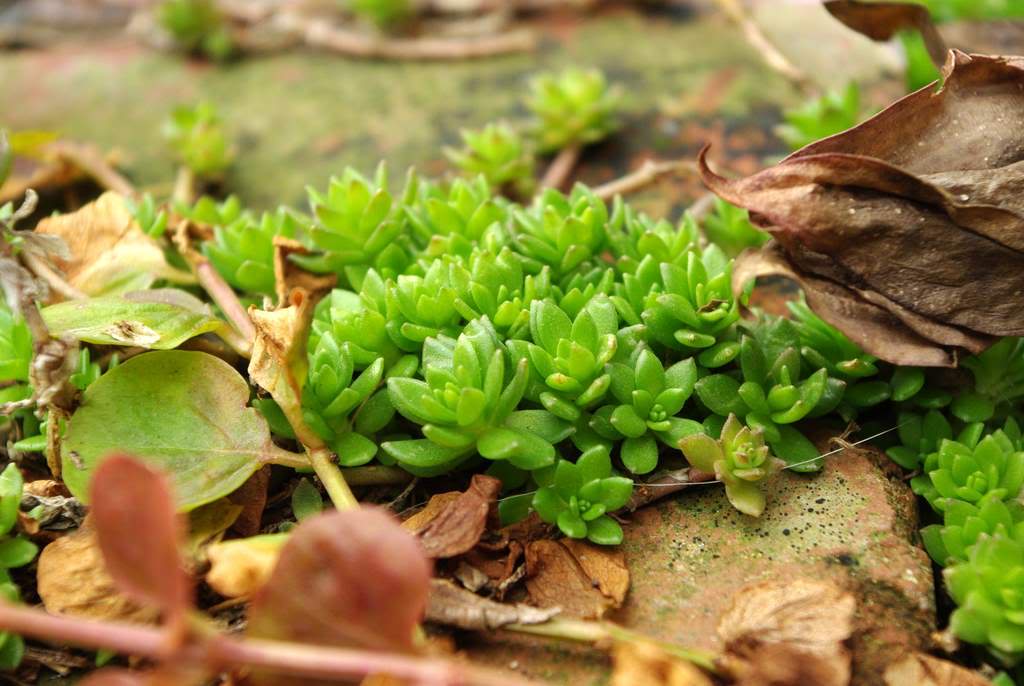 |
| The sedum I already have. Is it the same? I can't tell yet. |
I'll lightly cover the sedum with some soil, and it should root up very quickly -- I already see some roots forming on some of the strands.
The sempervivum is an unknown variety, and with so many different types of sempervivum hybrids around, I doubt I'll ever get a positive ID. It's quite large though:
I need to make some more well-drained potting mix, as the usual bagged stuff holds too much moisture.
I'm adding sand and perlite to the mix to ensure it has good drainage -- don't want these roots to rot!
It looks great! I can't wait to find a permanent place for this and all of my other new semps!
So now we come to the big plants: the Gunnera manicata.
It sure looks like a big clump of mud, or some sort of creepy river bottom octopus.
Those thick, fleshy roots are similar to what the Elephant Ears have -- just not as pink. I wonder if that's a common trait among all bog plants? More likely though is it's a trait shared by all big plants.
I wasn't sure exactly how deep to plant this, but it seems to me that the tops of the "corms" must be above the soil line, so that's how I did it. The smaller of the two plants I buried a little deeper:
The larger one was left a little higher in the soil, and knowing that these plants want to stay wet at all times I put a saucer under each of them:
This is rare for me, as I don't typically use saucers under containers. The exception to this rule is plants that need more moisture and can take waterlogged soils. Gunnera is definitely one of those plants.
I hope that I didn't do anything wrong when planting these, but all I can do now is wait for signs of waking up.
That's all for the planting today, but there will be much more coming up soon.
.
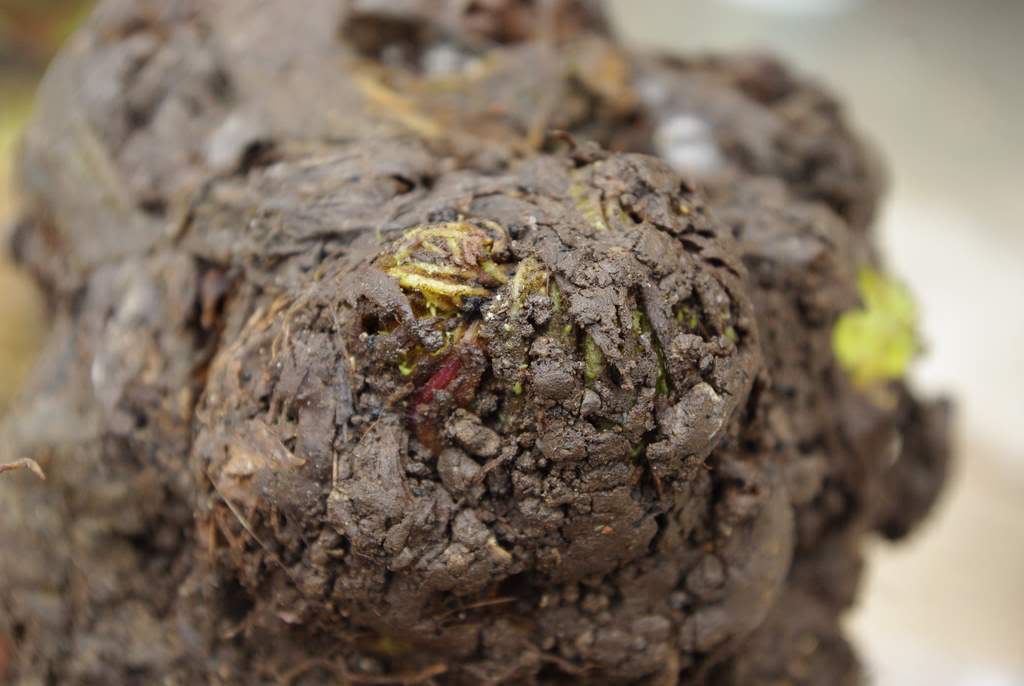
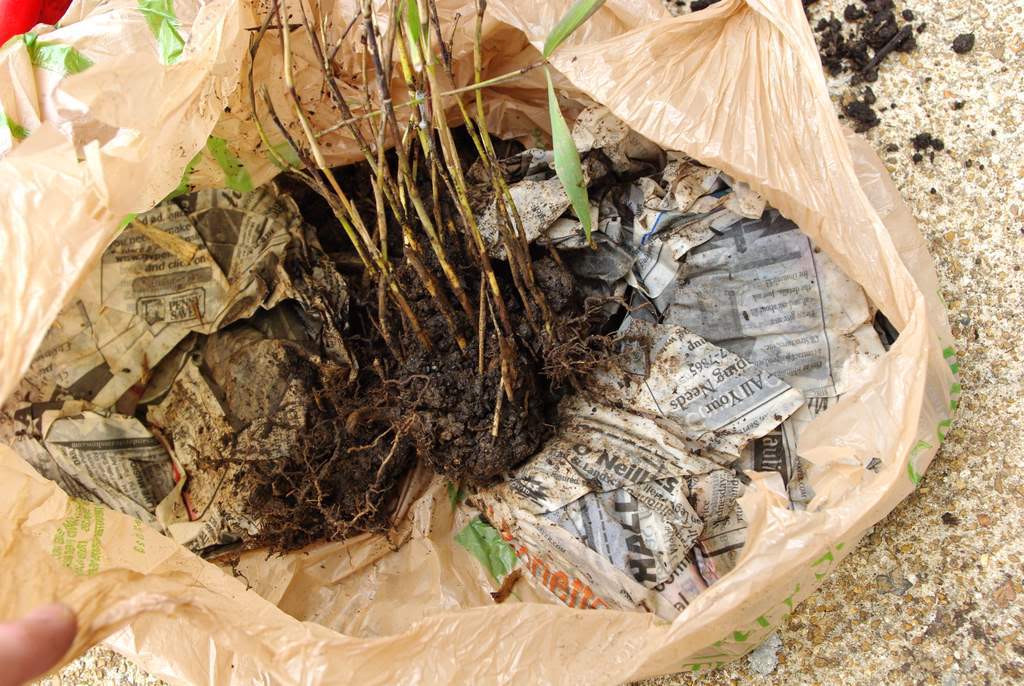
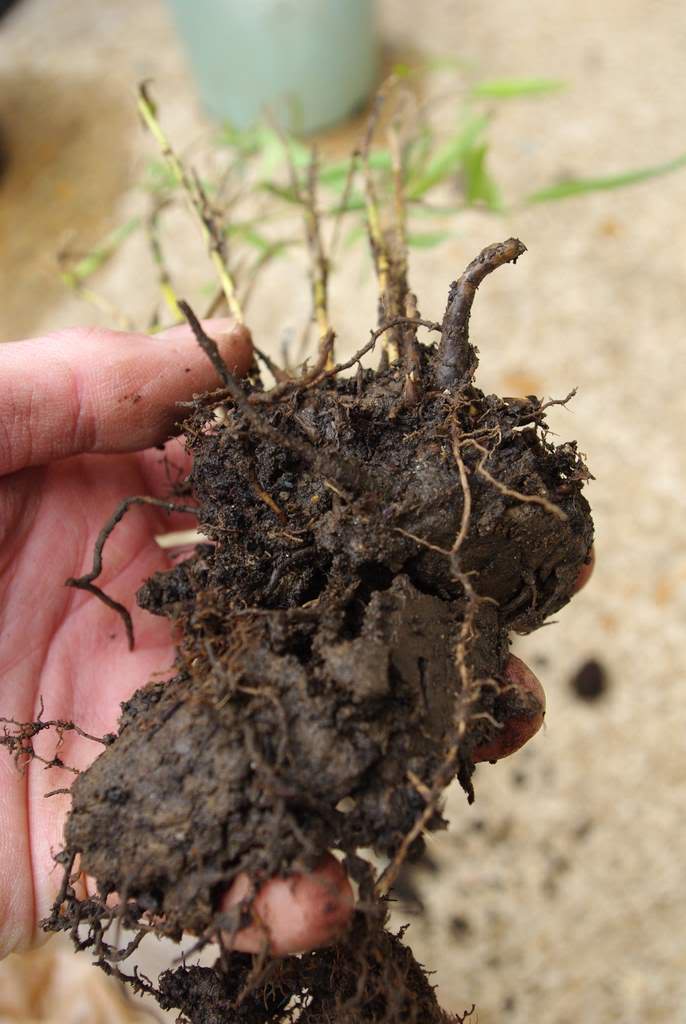

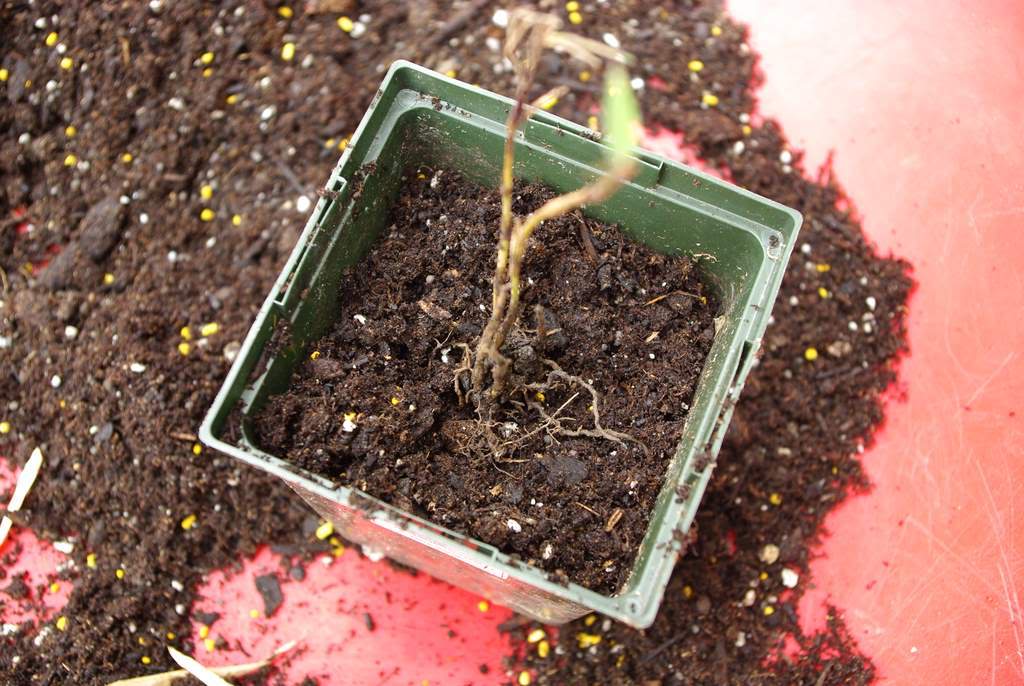
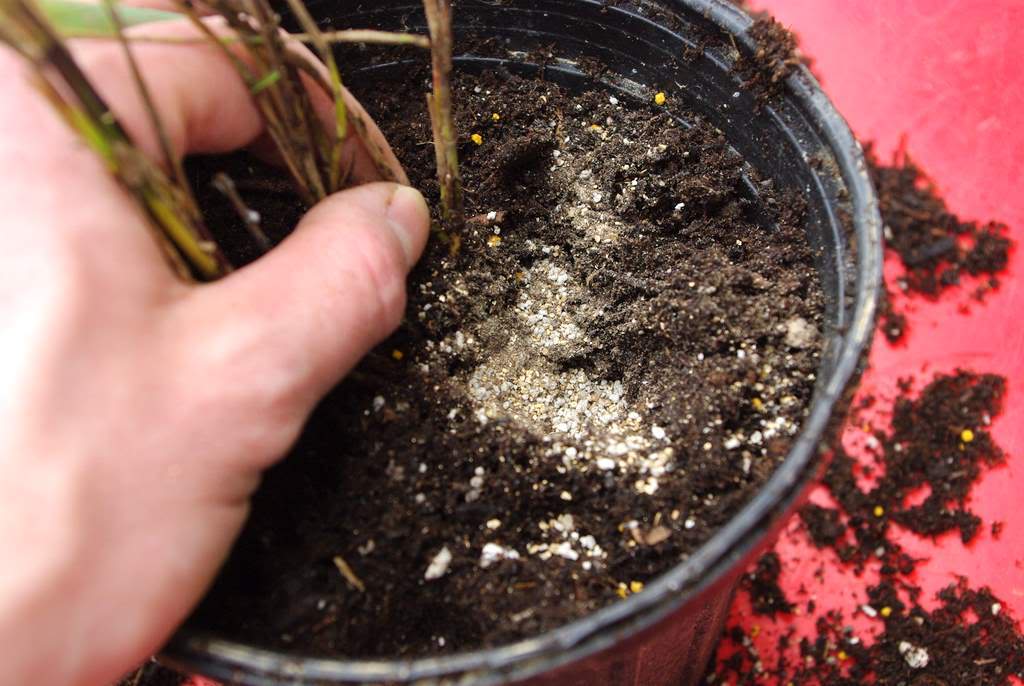
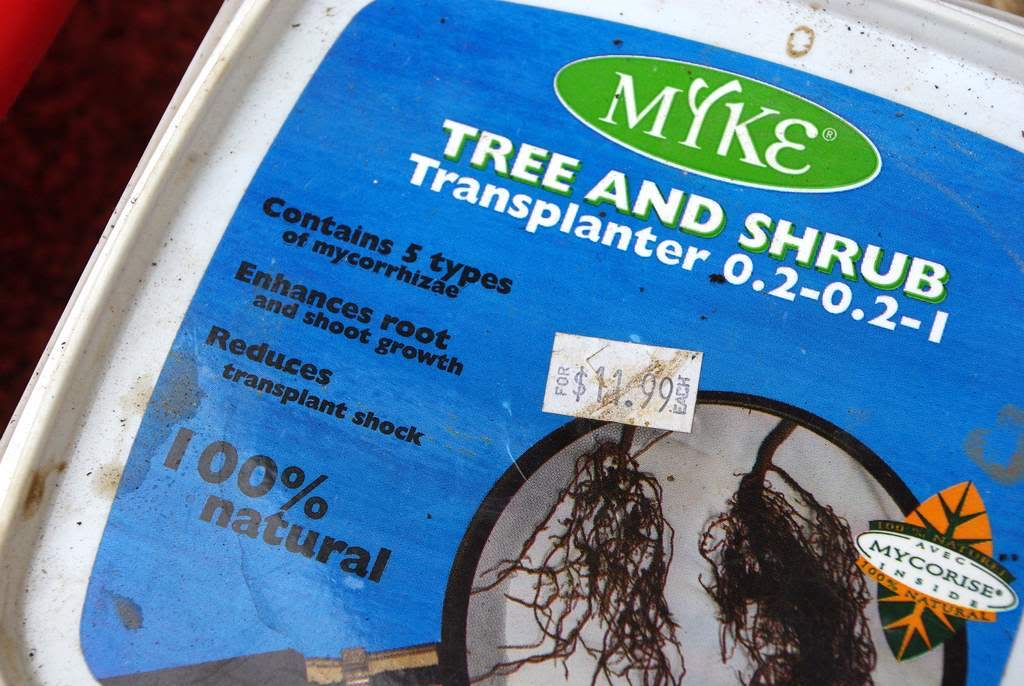
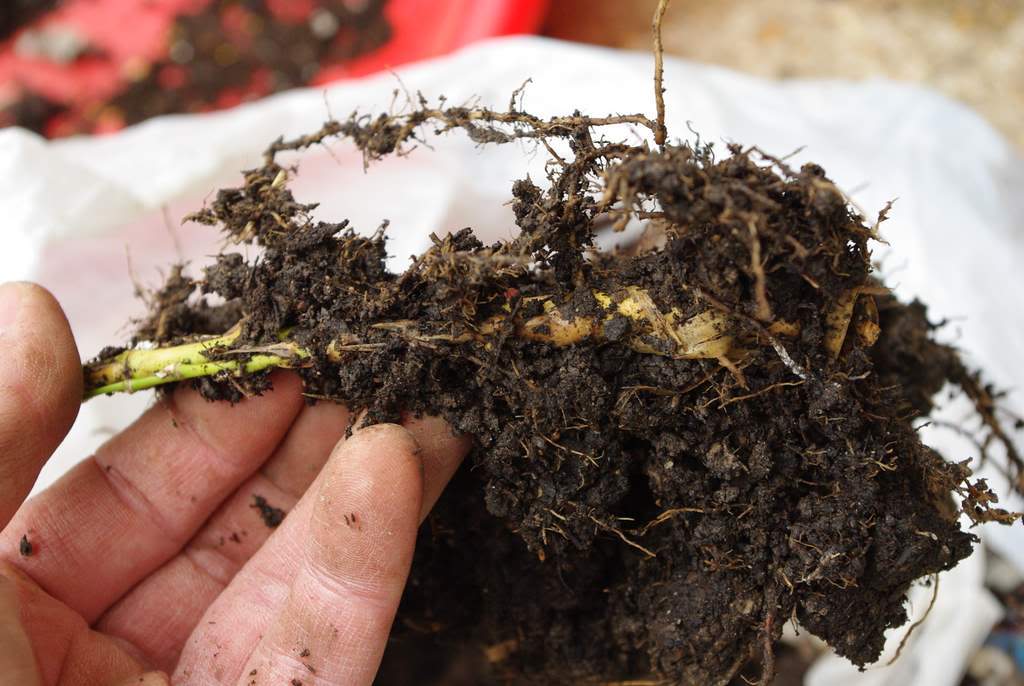
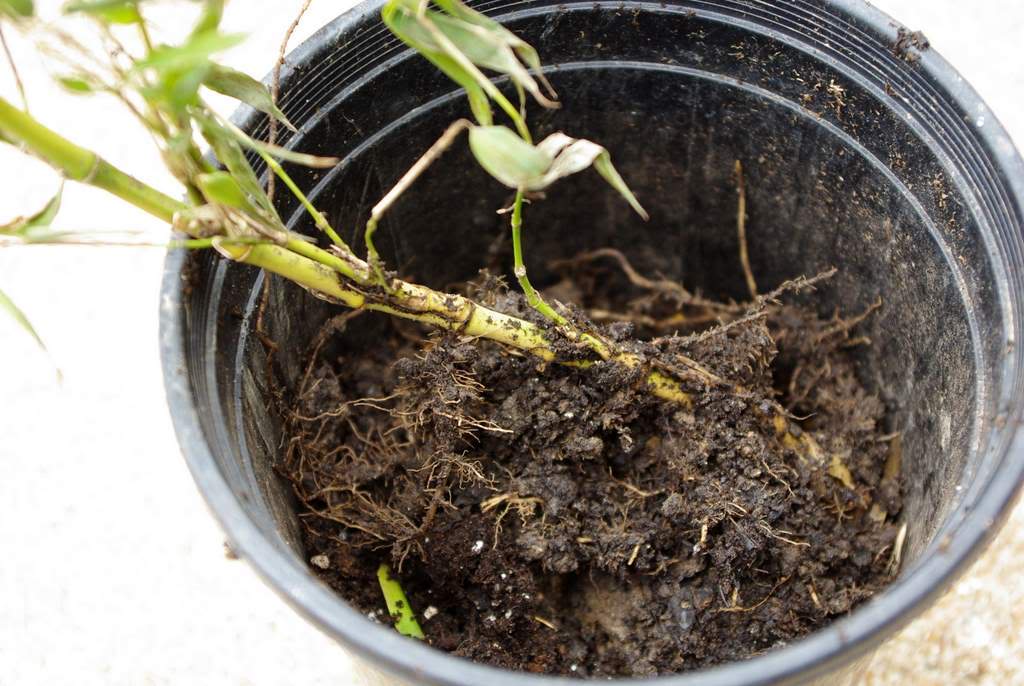

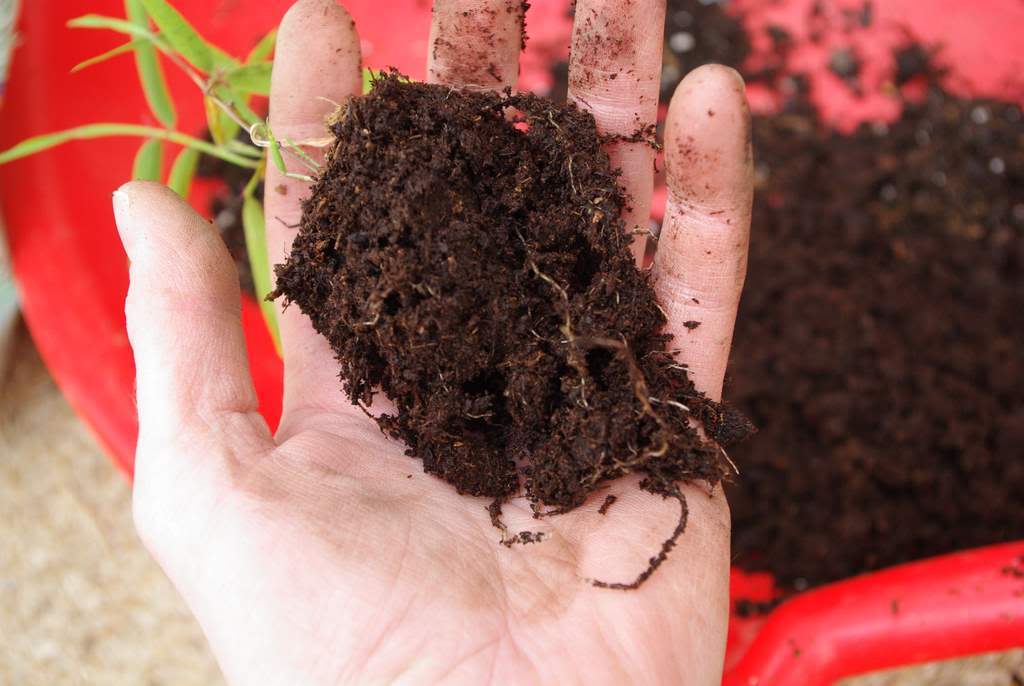
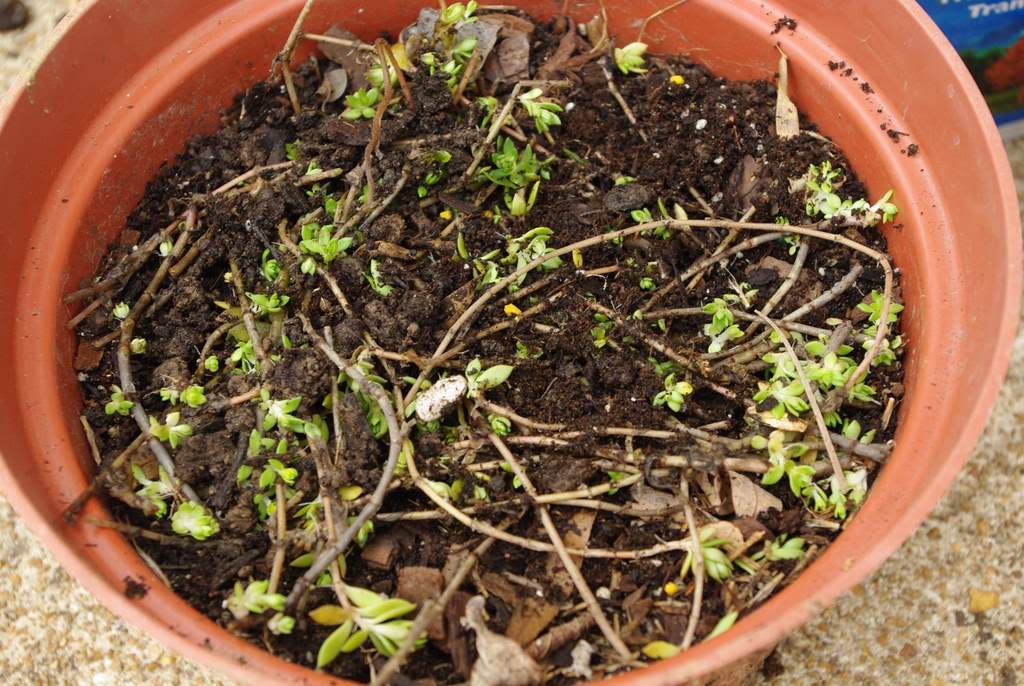
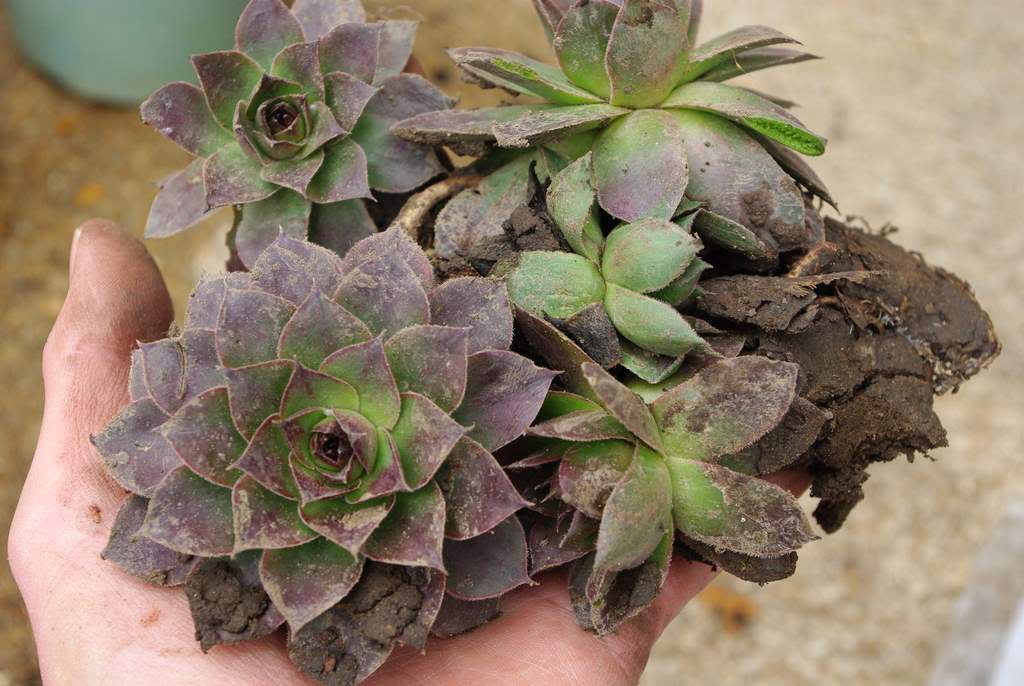
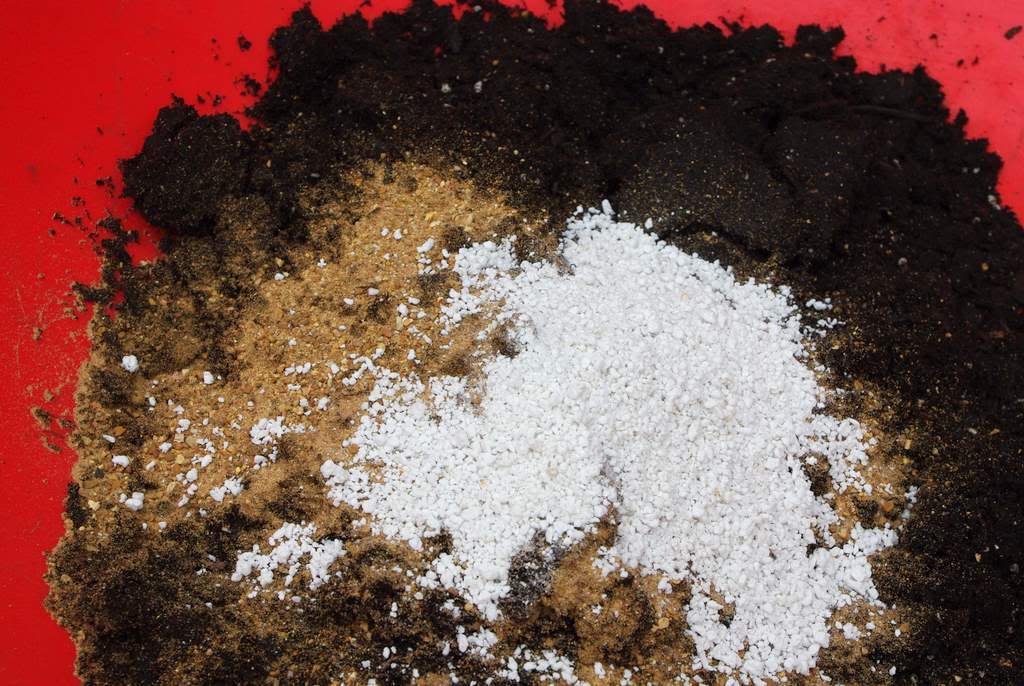

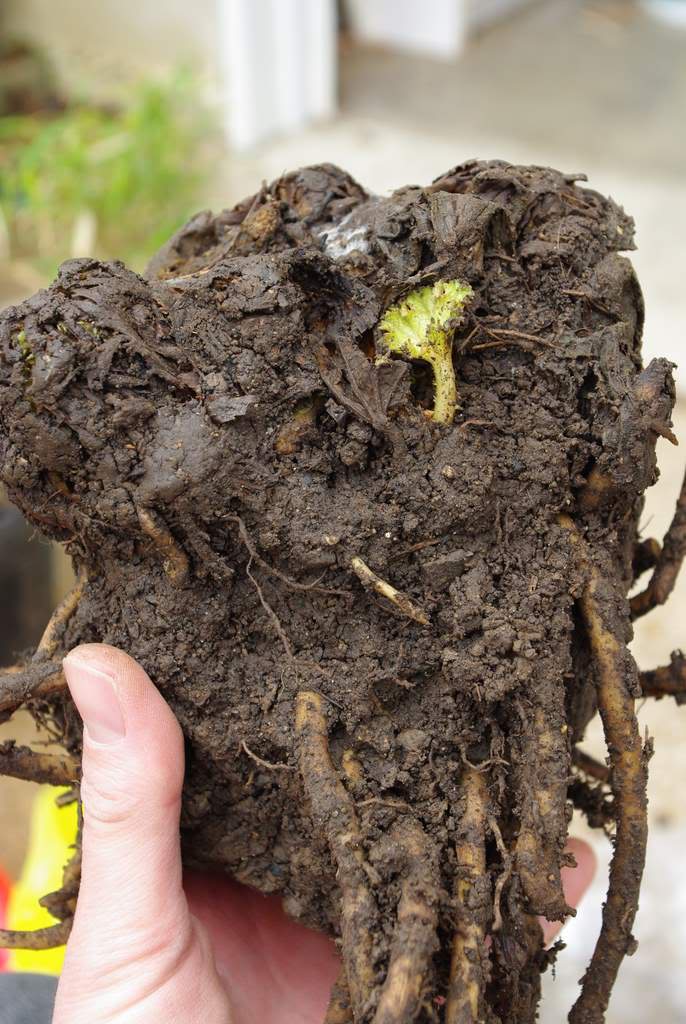
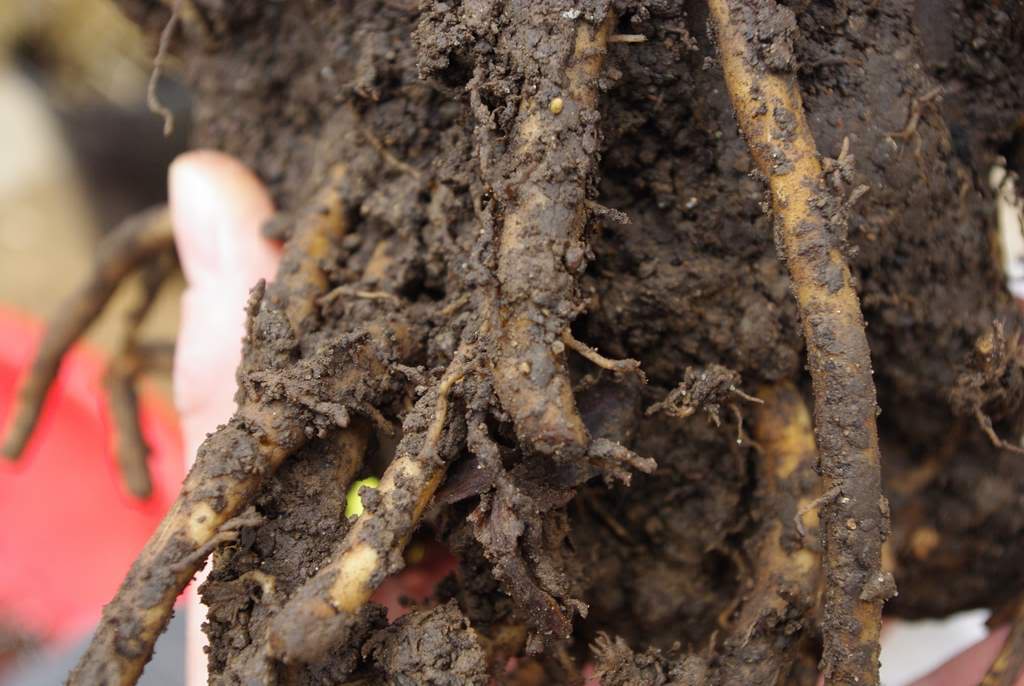
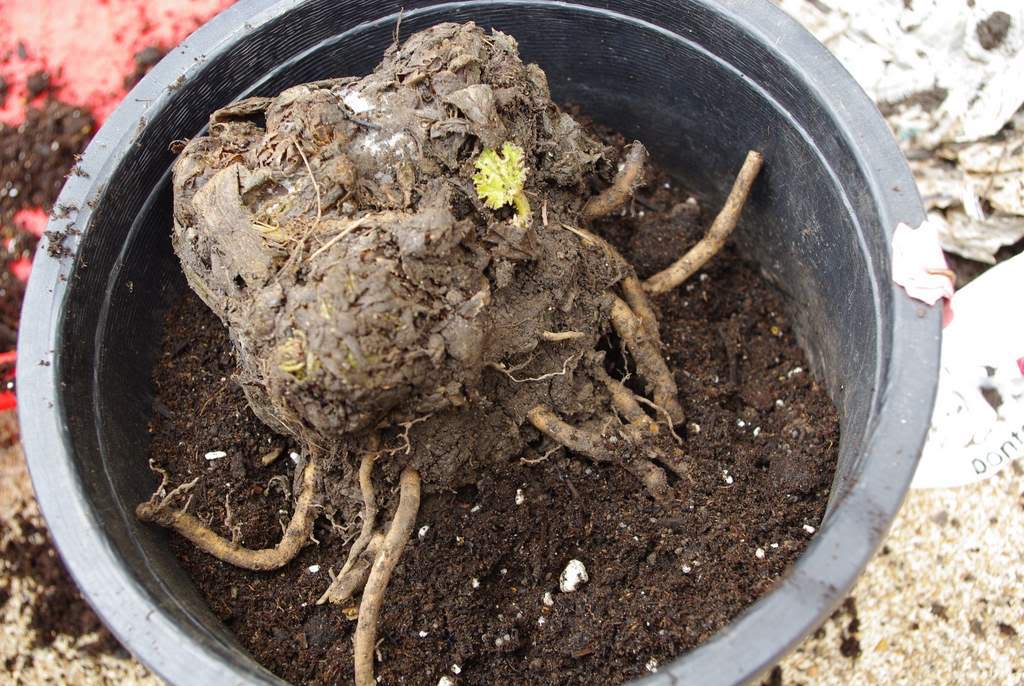
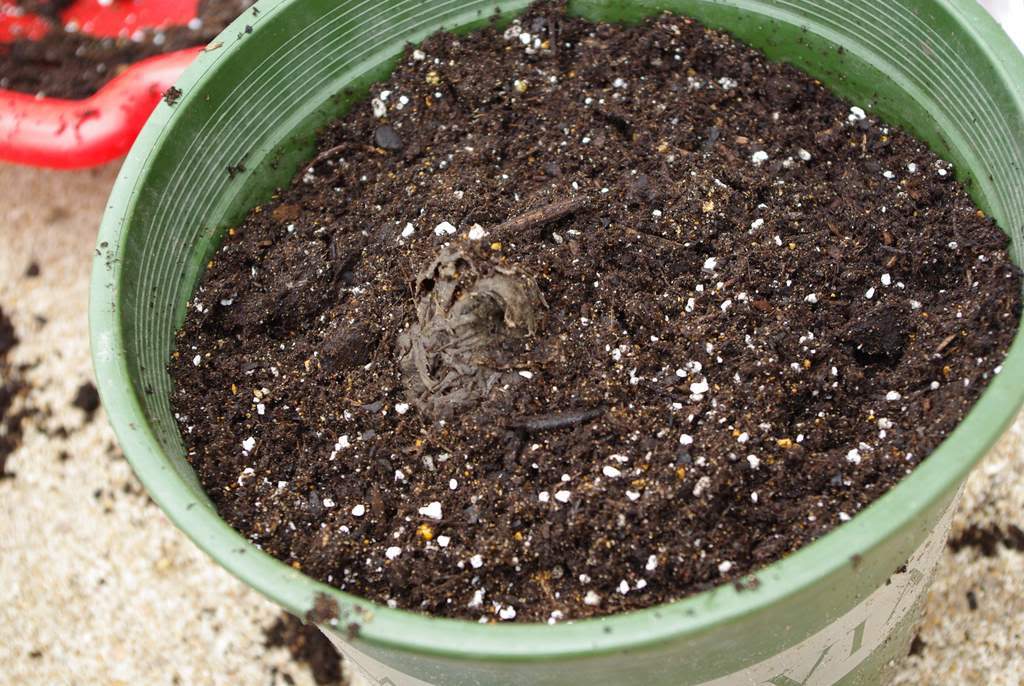
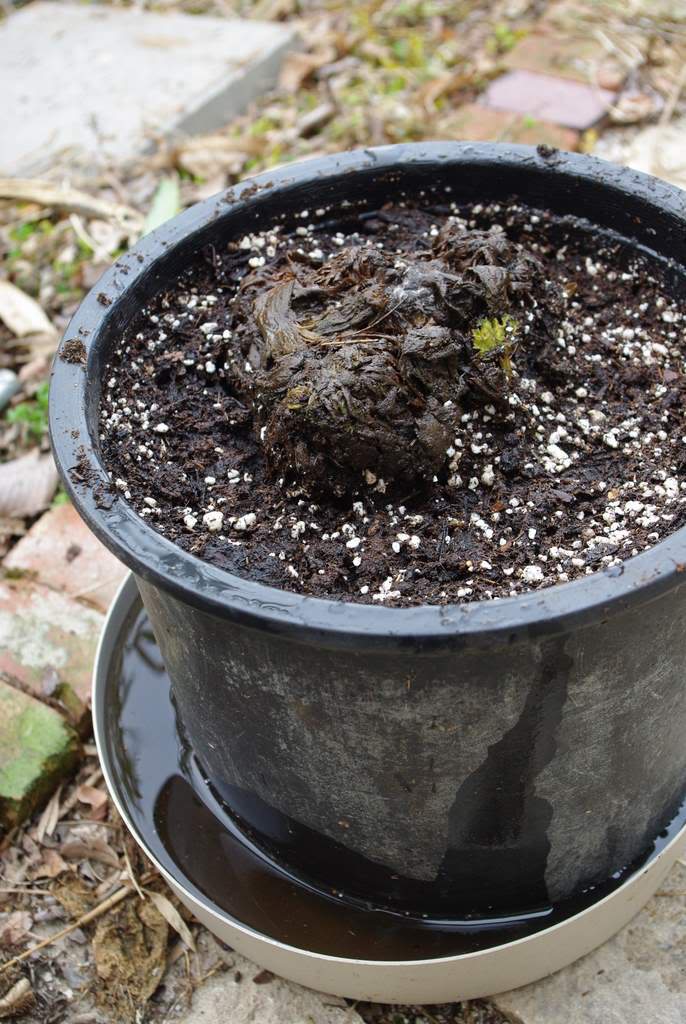




The kwangsiensis is planted in all peat moss which might be holding it back a bit, and still indoors with a lack of sunlight, but with better conditions, it should do ok. The parv was one of the juicy roots divisions which had 2 tiny root hairs so it might make mini-shoots this year, but probably needs another year to put on real size. I'm surprised at how much root mass they do put on, while similar divisions without any rooting hormone died out.
Steve: do the Gunnera look like they're potted at a good depth?
That's about the same depth I had it, but that corm should expand with side corms all the way to the edge of the pot within 3 months because once it makes its own roots, it should be taking off fast. It will only stay dormant for another 2 weeks at most, but going into the ground, I would suggest getting it just a bit deeper just so it never dries out.
I'm kinda interested in how long it takes that saucer to dry out once it makes its leaves. They drink water like crazy
I can't wait to see how the gunnera will do. I'm living vicariously here!!! :-)
:: Bamboo and More ::
The most exciting kind of package to unpack--just like Christmas. That clumping forming bamboo is very valuable. I am always amazed at how much they cost.
Steve: I'll move to a bigger pot (with bigger water reservoir) once needed, so no worries about the saucer. This is one of the plants I'm most excited about this year. :-)
Another thing is that they're pretty leaf sensitive to freezes once they break dormancy just like bamboo shoots and it looks like it already has from the time I sent it til now with that mini-leaf in the middle. They only hardy to maybe 10F once they revert back to their dormant stage.
That might be a problem given that you guys get major warm-ups, and shots of cold air throughout spring as opposed to here where it usually stays consistently cold.
Also I can't wait to try my juicy root gel which still isn't used up yet on spectabilis rhizomes because I will expect pretty good success rates given that it has worked on other bamboos and lots of other plants.